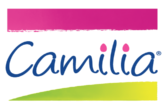
Kids are magnets for the common cold.
In an average year, children catch anywhere between six and 10 colds, and even as many as 12 if the child is in school or day care. On average, adults catch about two to four colds per year.1
According to the Mayo Clinic, the common cold is the number one reason why children miss school.2 The Centers for Disease Control and Prevention blames the common cold for nearly 22 million missed days of school. And missed school days mean that parents miss work to care for their kids. When added to the workdays missed by employees suffering from a cold, the total economic impact of cold-related work loss exceeds $20 billion.3
Young children tend to be less resistant to infection than a healthy adult. Schools and day care centers are breeding grounds for colds and flu because they connect children who may lack a fully developed immune system or don’t have “cold etiquette.” In comparison to spending the summer months in the home and outside, a child is exposed to more children and is in closer contact with others when school is in session. Crowded classroom conditions increase the chance of coming in contact with someone who is sick or with a contaminated surface.
Cold and flu viruses can be transmitted by touching respiratory secretions on a person’s skin (like when playing) or on surfaces and then touching the eyes, nose, or mouth.
Kids are notorious for not washing their hands — one simple way to avoid transmitting cold and flu bugs. They forget. They’ll insist their hands are clean. They’ll run water over their hands for two seconds without soap so they can rejoin their friends.
Schools and day care centers are breeding grounds for colds and flu because they connect children who may lack a fully developed immune system or don’t have “cold etiquette.”
Cold and flu viruses can also be transmitted by inhaling infectious particles in the air (like respiratory secretions from a cough or sneeze).
Children may not yet have been taught — or truly absorbed — cold etiquette. They’re very likely to wipe their noses with their hands and are not likely to sneeze into their elbows. A sneeze can expel particles from the nose at more than 100 mph! Those fast-moving particles can cover an almost three-foot radius, and once airborne, can easily be inhaled by a nearby child.
The period when an infected person is contagious depends on the age and health of the person. Studies show that most healthy adults may be able to infect others from one day prior to becoming sick and for five days after they first develop symptoms. However, some young children with still maturing immune systems may be contagious for more than a week.
There are several homeopathic medicines that can relieve your child’s coughing, sneezing, and runny nose:

ColdCalm®Kids Pellets temporarily relieves cold symptoms such as sneezing, runny nose, nasal congestion, and minor sore throat.*
(Also available as a pre-measured liquid dose in ColdCalm Baby and ColdCalm Kids.)

Chestal® Kids Cold & Cough Syrup temporarily relieves symptoms of the common cold such as nasal and chest congestion, fitful cough, sneezing, minor sore throat, and runny or stuffy nose.*

Chestal Kids Honey Syrup temporarily relieves dry cough due to minor throat and bronchial irritation as may occur with a cold.*
References:
1 National Center for Biotechnology Information. Colds in Children. Available at: https://www.ncbi.nlm.nih.gov/pmc/articles/PMC2722603/.
2 Mayo Clinic. Children’s health. Available at: www.mayoclinic.com/health/childrensconditions/CC00059.
3 Fendrick AM, Monto AS, Nightengale B, Sarnes M. The economic burden of noninfluenza-related viral respiratory track infection in the United Sates. Arch Intern Med. 2003;163;487–494. Available at: http://archinte.ama-assn.org/.

